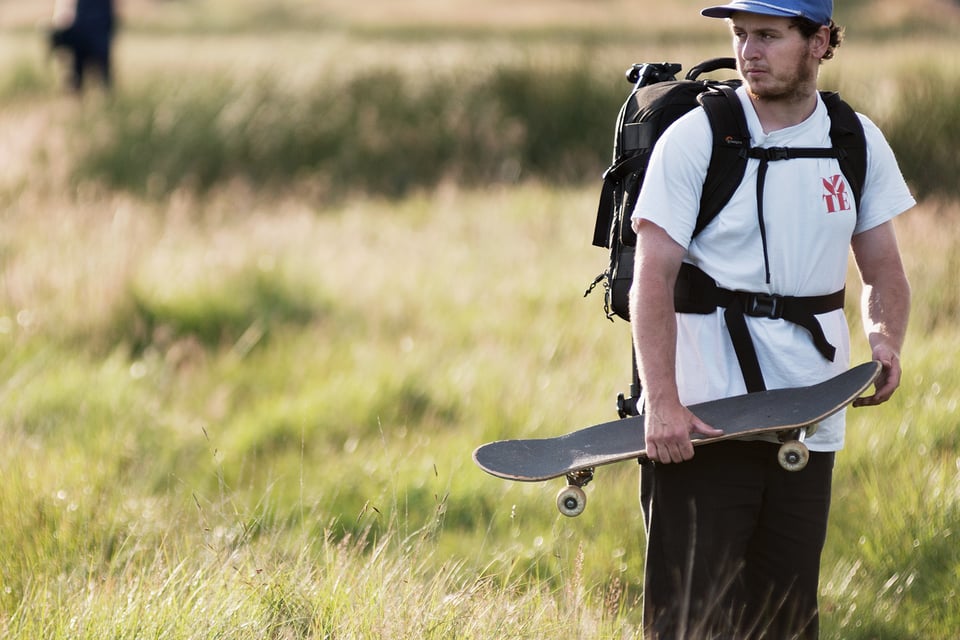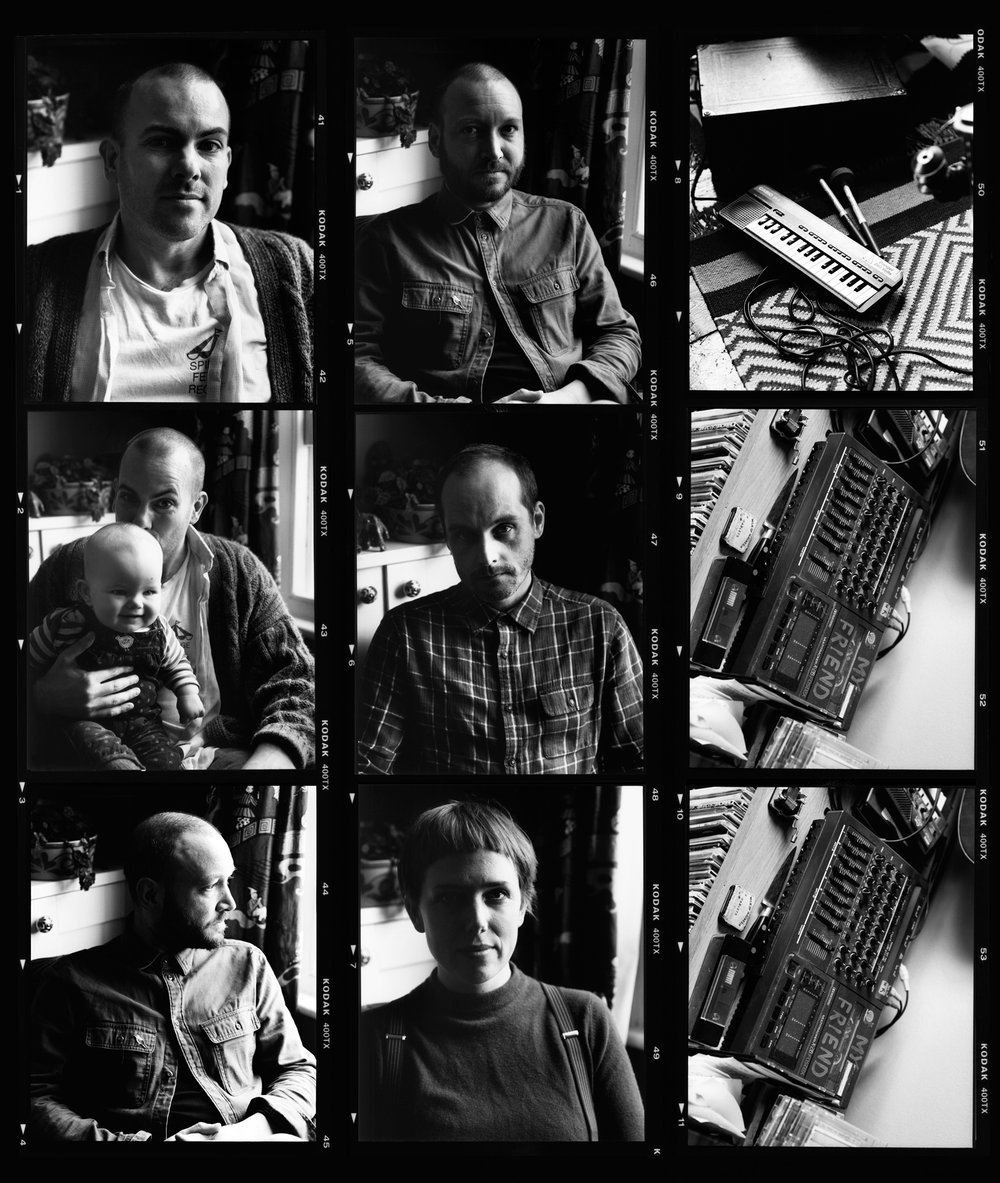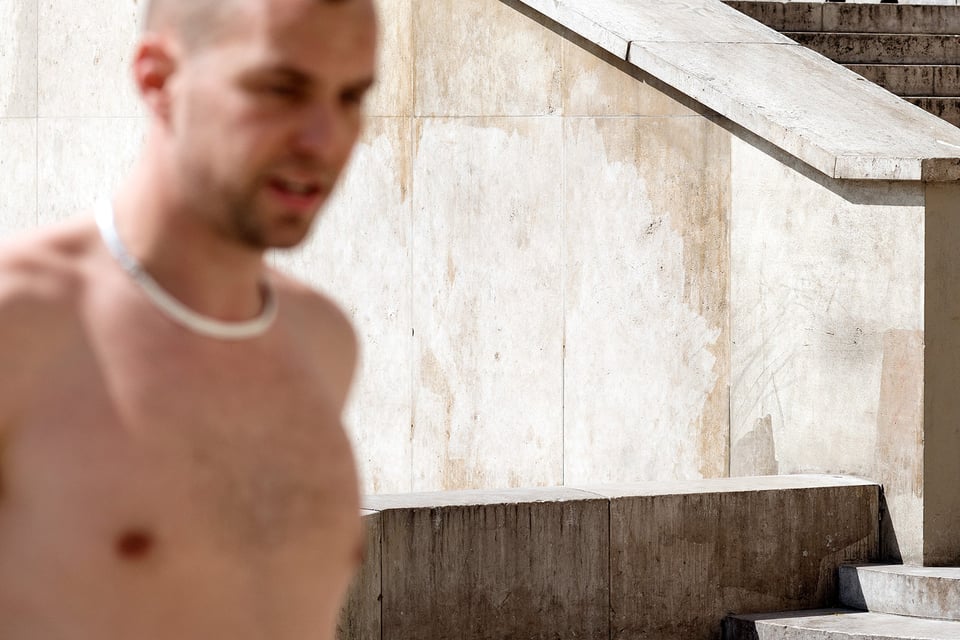Previous post


Photography: Lex Kembery
Who approached the label about using your music for Island? Was it somebody you knew?
Henry Kingsford approached us for this project as he previously used our Jam Money music on Land, a beautiful skate film James Craven also released by for Grey. We really loved the whole approach and feeling of Land and how James had peppered our music between pockets of natural sound.
I grew up being inspired by the music of skate videos, in particular those where both the skateboarding and the music are in conversation with each other, so to have our music set alongside James’s beautiful documentation of a landscape that is rarely graced by the wheels of a skateboard is a really special thing indeed. On the Island film, there is both a combination of Jam Money music as well as a track off our very latest collaborative album, Bons’ Gras H’utsi.
The music we make both as Bons and Jam Money is informed by texture, space and mark-making, so I understand how James could find pieces of music that he felt soundtracked certain passages of the film, especially as Island explores so much of the materiality of the landscape itself, be it the natural backdrop or the man-made concrete reservoirs and ditches.
That’s interesting, because it almost feels like the music was composed for Island. That hasn’t happened much, other than Mr. Dibbs doing the music for the Habitat section in Photosynthesis and Baron for Flip’s Extremely Sorry. Do you think this is something that could happen more in the future, musicians working with film-makers in skateboarding? Would you ever want to do that?
I think perhaps our music and Island have a shared interest in adventure, which when put together manage to create a narrative that goes hand in hand. I also like how James uses life around the skateboarding itself – camping, cooking, weather, drying off the spots and so on – which takes it somewhere other than a regular ‘trick’ video. In comparison, I enjoy hearing the spillages of home recording feeding into our own music, doors opening and closing, kettles boiling, doorbells ringing etc., all of which add a sense of serendipity as well as the everyday. Whether aware of it or not, everything feeds into and colours your practice, be it music, art or skateboarding.
Would I ever want to compose music specifically for a skate film? That’s an interesting one. In one sense yes, but I like how when selected well, the smash of music and film can combine to create something unexpected. Perhaps if we had seen Island first and then composed music for it, we might have played too much to our own notions of what the film is about, which of course will be different for everyone who sees it, and that’s wonderful.
As a sponsored skateboarder, much of your coverage was in London and you were known for skating Southbank. Island is as far removed from city skateboarding as it gets, but visually much closer to the music you make now than to the skateboarding you grew up doing. It must be refreshing for you to see skateboarders explore a bit more and do something different outside the usual agreed norms. Do you think skateboarders should feel obliged to search out more unique spots?
My later years were skating in and around the city of London, but previous to that I grew up where the edge of the sprawling metropolis met the countryside. So for five or so years my sense of landscape in relation to skateboarding was not so different from Island, though obviously not as extreme and barren.
My first ‘mini-ramp’ session was on two pieces of 8×4 placed together to form a v shape. We dragged these from outside a newly built housing estate to an overgrown wasteland on the other side of the village. At the time there were no skateparks or even mini-ramps close to me, so we had to make the very most of what was available to us. In many ways these are my fondest memories of skateboarding.
I think a lot of skateboarders do search out unusual and unique spots, but it often tends to be limited by the geography of a city. To see a film that takes people to the less populated and unexplored parts of our beautiful island is refreshing and becomes so much more about the journey than the end goal or trick.
Do you follow skateboard media? You’re definitely in a position to be, after being heavily involved in the production of Playing Fields. Island isn’t exactly a conventional video, but I know you appreciate the physical format, and videos are rarely produced in physical formats now. It’s like music has returned to its physical form and skateboard videos have distanced themselves from it.
I haven’t really followed skate films so much in the last 10 years, but I’m aware that new releases tend to come out online nowadays as opposed to other formats. You’re right, music started that journey towards a purely digital crossover, but I think it’s reached some kind of happy medium –to excuse the pun – between music being more readily available online and labels going the extra mile to release and expand upon vinyl releases that allow people to digest the music in a different way. So much of our lives nowadays involve computers, phones, being online and your attention being constantly fractured, so I enjoy the slowness of time spent placing a record on a turntable, and listening to a whole LP from beginning to end in my living room.
What happened to Reaction (Mat’s last board sponsor)? Do you skate much?
I left the Reaction skate team of my own accord not too long after making a video section for its Creation video, whereafter I started to skate less and began making music for the first time. These days I don’t skate so much, but the odd time I have done I have always find it euphoric and therapeutic so perhaps I should roll more! These days my pockets of time tend to be used for making music as well as looking after my daughter Agnes, although I would love to have a roll at the Palace skatepark, which is not too far from my home.
Speaking of Palace, its videos always look really good and they are always made using VHS. How much scope do you think there is to experiment in making skateboard videos? I think Island gets the filming, skaters, tricks, spots, cutaways and music exactly right, but if any of these things weren’t right, it’s possible the whole thing wouldn’t work. Is it too much of a risk to go beyond the usual methods? I’m asking because that’s what you do with your music. It’s a very fine balance of getting everything just right, no matter how delicate it is.
Spillage Fete definitely holds a shared philosophy for formats with the Palace video, our music being all recorded to tape. They have great ideas and are not afraid to take different directions in the way they present skateboarding. Island is equally unique albeit in a completely different way that focuses more on environment and journey than format. Some skate films work better than others and collectively people can feel this too; an alchemy of a number of things coming together to create more than the sum of its parts is what pulls one film out over another. I think it’s always worth pursuing an idea or creative process you feel might enrich your own making. The only way of learning and progressing is to try different approaches. Through constant experimentation, something will spark, albeit unexpected and different from the starting point. These natural interventions through making are what inspire me to keep searching.
Does skateboarding inform the music you make? I mean, you can hear the hills of San Francisco in Tommy Guerrero’s music, but your music is a lot more pastoral or organic than the sort of places you would skate.
Skateboarding without a doubt has informed my own approach to music making, but I think more the independence and focus that’s involved. When I used to skate, the thing I enjoyed most about it was the act of doing it, the moment you really connect and put all of your attention into whatever trick you were trying. I can vividly remember knowing, almost before attempting a trick, if I might or might not land it based on how relaxed and clear my mind was. I liked that pure focus of attention, for a fraction of a moment you could almost fall out of time and it felt like anything was possible. It’s the same with making music, if you surrender yourself wholeheartedly to it, unexpected things will happen. It’s that feeling of what might and could happen outside of your own control that I like most when approaching music. Perhaps it’s for this reason people often refer to Jam Money as sounding pastoral or caught out of a particular place or time.
Do you get held up by pressing plants now that everybody wants vinyl? I know a lot of little labels have had their release schedules shattered because the plant is busy pressing 150,000 Pink Floyd albums or whatever. And it seems like as a result this vinyl boom is actually damaging real record labels in the longer term.
It does not affect us too badly, though it can hold up your release depending on when you send a record off for production as unfortunately priority will go to bigger commercial orders. But the flip side is it’s really uplifting seeing independent and second-hand record shops thriving and full of people.
What’s it like running Spillage Fete? There’s been a massive return to vinyl lately, but does that require social media? How analogue can we go? I know you don’t seek publicity too much, but have you noticed people being more open minded with their tastes?
Myself, Kevin and other Matt all contribute to the running of the label. Funnily enough all three of us have never used smartphones, so we don’t overindulge with social media. We have computers, so we use some forms of social media to help share news of releases and gigs. We’ve recently set up a Bandcamp site where we sell both vinyl and digital releases, which is proving to be very helpful in sharing our music online.
When we first started the label we were very slow to use social media – we never used it ourselves – which made it quite hard, but it does help, especially because at the moment we don’t use distribution, so rely more on the goodwill of people taking the time out to listen, review and help share our music through word of mouth. We are lucky that a few people have started to champion our releases, people like Stephen Pastel from The Pastels and Monorail Records in Glasgow, as well as Kiran Sande who runs the Blackest Ever Black label and the new London-based record shop Low Company. Judging from these examples I think tastes are really opening. People do want to hear lots of different and diverse music and it feels exciting to be a part of that.
How do you work together, as a band / collective? Is it hard to organise coming together to make music?
Jam Money is music made by myself and Kevin Cormack. We released two records: Blowing Stones in 2014 and A Gathering Kind last year. My partner Aimée Henderson created all the artwork for both LPs. Her paintings and practice were hugely informative to the spirit of the music – the two go hand-in-hand. The Bons recordings are also myself and Kevin as well as Spillage Fete co-founder Matt Hunt, who this time created the artwork for the cover and inserts, which again reflect the music. Jam Money has a slightly more gentle and ‘out of time’ feel to the recordings, where as Bons is more of a document of time and place, as well as sounding a little more rough around the edges.
At the moment we all live in London, so often meet up to record music in each other’s homes, but just as important is the process of tape swapping, sharing and recording music onto each other’s four-tracks to collaborate independently of each other. This makes for a kind of musical ‘exquisite corpse’ and keeps the collaboration fresh and surprising as well as taking away any ownership or control of the music, which I think in turn creates a more generous listen.
Are the Blank Tape Spillage Fete exhibitions still taking place?
We held two BTSF exhibitions, curated by myself and Matt in 2006 and alongside Kevin and Benji Fox in 2009. The exhibitions, or Fetes, were held at the Cecil Sharpe House in Camden, the home of English folk song and dance. They involved sending out blank tapes to artists making music and musicians making art, the objective being that they could make their own recordings on to tape and create accompanying artwork. We then collected a bunch of second hand Walkmans to use as individual listening posts for each contribution and the artwork would sit alongside the listening posts, or in our case trestle tables, bunting and doilies, hence ‘Spillage Fete’. It’s worth saying that a few skate related music / art makers were involved like Nik Taylor, Markus Oakley and Frank Hirata.
At this time we have no immediate plans for a third BTSF though we have extended the idea to a printed journal called The Occasional, which features artwork from previous Spillagers alongside their music on a CD attached to the cover.
What was Frank Hirata like? I had no idea he even made music.
I wrote to Frank at the time because I had seen his part in Foundation’s Rolling Thunder video for which he made his own music. I thought it would be interesting to get him involved, which to my surprise he was genuinely up for. He sent over his music on tape as well as some artwork to sit alongside – a home-made tiny wooden skateboard covered in handwriting, which I still have!
A lot of ‘outsider’ music is quite consciously unapproachable, but despite its uniqueness, the records you make and release are very approachable. Do you plan that?
There’s no plan as such, but I think the combination of both musical exploration and melody is akin to all of us at Spillage Fete. My favourite records that I always come back to often have experimental elements as well as something very human and generous about them, which personally I find really important. As technology becomes more and more a part of our everyday lives I think we are all touched by art and music that comes from a different place and that has the power to soften and gently freshen our own outlook on the world.
Why do you think so many skateboarders move into creative industries?
This is something I talk to people a lot about. I think it comes from having to search out, explore and make use of architecture in a completely different way. It’s a creative process, and that’s why I preferred street skating to skateparks. It felt less prescribed and involved more interpretation and imagination to make a connection between yourself and a piece of street furniture, and again the possibilities felt endless and were constantly being surpassed by new ideas and ways of approaching what could be done on a skateboard. I was from an era where street skating was suddenly coming to life after the ’80s ramp / park crossover. Just when you were beginning to think you had worked out most flatland tricks, out of nowhere came switch and so on.
The personal rewards of making art, music, writing and other creative pursuits are often not measured financially, which was also the case when I was skateboarding. I could probably count on one hand people who were actively making a living from skateboarding in the UK at that time. So it takes a certain stubbornness to carry on and keep it going with little or no money, which is the case for many artists in this day and age. Skateboarding gave me a huge sense of freedom, which is much the same as making music albeit less jarring to my old knees.
Whose music do you enjoy just now?
I listen to a lot of different music these days, a combination of old and new, for both inspiration and the pleasure of listening. The old Folkways label that documented and recorded folk and tribal music around the world in the 1950s is something I’m continually exploring as there are so many incredible releases. I have many of their records: recordings of African tribes, Japanese temple rituals, sea shanties and many more. I find the recordings inspiring as well as moving, particularly as the music was often commemorative or in celebration of a particular occasion, be it a harvest, birth or death. I also enjoy the music made by friends or people we’ve met through our own music – the German label Alien Transistor that released one of our Jam Money records also releases so many eclectic records I enjoy, like Rayon, Le Milliepede and the Japanese outsider musicians the Tenniscoats, who I’ve recently made a collaborative record with called Spirit Fest. That has just come out. And to list a few favourites: Alastair Galbraith, Colleen, The Flaming Tunes, Maher Shalal Hash Baz, Leven Signs, Kama Aina, Aki Tsuyuko, Gentlist and Speedbooth, which is a forthcoming release on our own label by Kevin Cormack.

